Inside of the while loop, you can have a single statement or multiple statements, which are executed until the test condition is true. This article describes the Python while loop and provides some simple examples using this function.First, we will talk about the syntax of the while loop.
Syntax of while Loop
The syntax of the while loop in Pythion is as follows:
while test_condition:
statement(s)
When the while loop is executed, the test_condition is evaluated first. When the test_condition is true, the loop body or statements are executed within the loop.
If the test_condition is true, then the body of the loop or statement(s) inside the loop are executed. Executing the body of the while loop only once is denoted as one iteration. The test condition is checked after every iteration, and the while loop runs until the test_condition is false.
Flow of the while Loop
The figure given below depicts the flow of the while loop.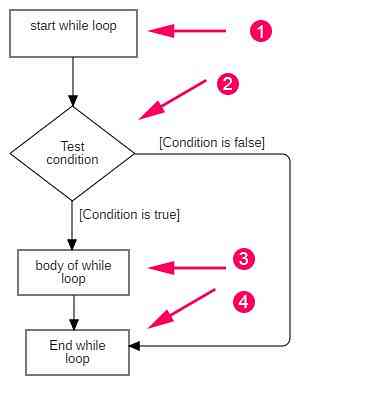
Examples of while Loop
Now, let us look at some examples of the while loop and to understand how it works.
In this example, first, we declare a sum variable whose value is zero. The while loop is then started using the while keyword. The test_condition is sum<20. This means that the loop will run until the sum variable value is less than 20.
When the test condition is false and the sum value is 20, the loop will terminate and the program will print “End of while loop.”
# declaring a variablesum = 0
#starting while loop
while (sum < 20):
#printing the value of the sum
print ("The value of sum is", sum)
#incrementing 1 in the sum in every iteration
sum = sum + 1
print ("End of while loop")
Output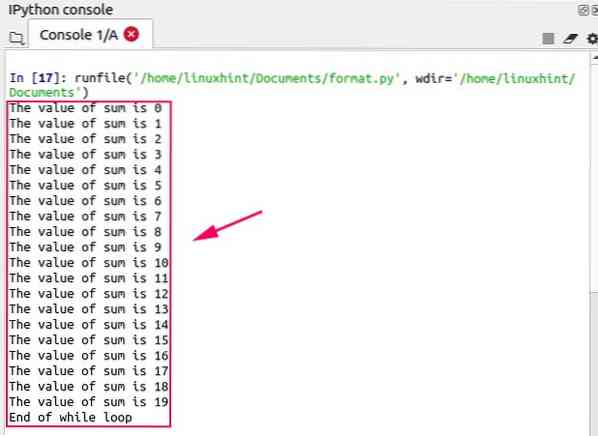
You can also declare the else statement with the while loop. The else block is functionalized when the while test_condition is false. In this example, we will add the else statement to the sum example given above.
sum = 0
#starting while loop
while (sum < 20):
#printing the value of the sum
print ("The value of sum is", sum)
#incrementing 1 in the sum in every iteration
sum = sum + 1
#writing the else statement
else:
print("Executing the else statement")
print ("End of while loop")
Output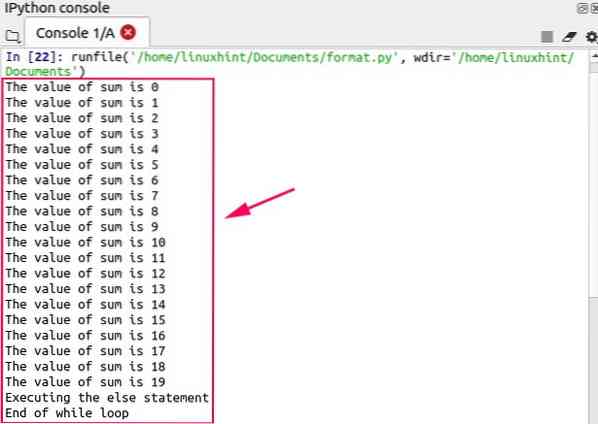
In the next sections, we will discuss control statements, including the continue and break statements, within the while loop.
Control Statements
You can also control the execution or behavior of the while loop using the control statements. The following include the control statements that can be used with the while loop:
- continue
- break
The continue Statement
The continue statement is used to skip a specific iteration and perform the next iteration instead.
In this example, when the sum value is equal to 5, the current iteration is skipped, and the next iteration will start.
#declaring the sum variablesum = 0
#starting while loop
while sum < 20:
#incrementing 1 in the sum in every iteration
sum=sum + 1
#declaring the if condition
if sum == 5:
#the continue statement
continue
#printing the value of the sum
print("The value of sum is: ",sum)
Output
In this output, it can be seen that the program does not print the value of sum when the sum value is equal to 5. The current iteration is omitted and the following iteration is executed.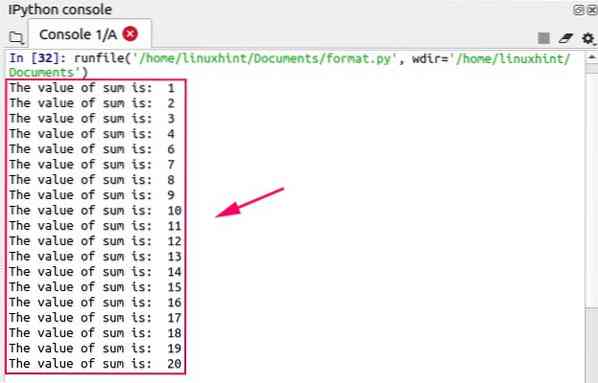
The break Statement
The break statement is used with the while loop to terminate the loop unless the test_condition is true. In this example, when the sum value is equal to 5, the loop is terminated.
#declaring the sum variablesum = 0
#starting while loop
while sum < 20:
#incrementing 1 in the sum in every iteration
sum=sum + 1
#declaring the if condition
if sum == 5:
#the break statement
break
#printing the value of the sum
print("The value of sum is: ",sum)
Output
In the output, it can be seen that the program terminates when the sum is equal to 5 unless the test_condition is true.
The infinite while Loop
A while loop that never terminates is called an infinite while loop. In an infinite while loop, the test_condition never becomes false. Instead, the test_condition always remains true, and the while loop never terminates.
In this example, the value of the sum variable is 10, and the test_condition is declared as sum=10. In this case, the value of the sum variable always remains 10, and the test_condition always remains true as the loop begins executing.
#declaring the sum variablesum = 10
#starting while loop
while sum ==10:
#printing the value of the sum
print("The value of sum is: ",sum)
Output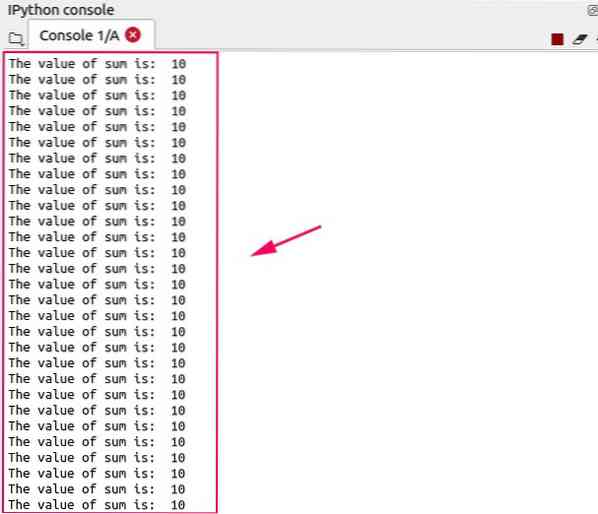
Conclusion
The Python while loop is used to repeatedly execute the same code block unless certain conditions are true, though infinite loops continue to execute regardless of existing conditions. In this article, the while loop in Python was explained by showing a few simple examples.
 Phenquestions
Phenquestions


